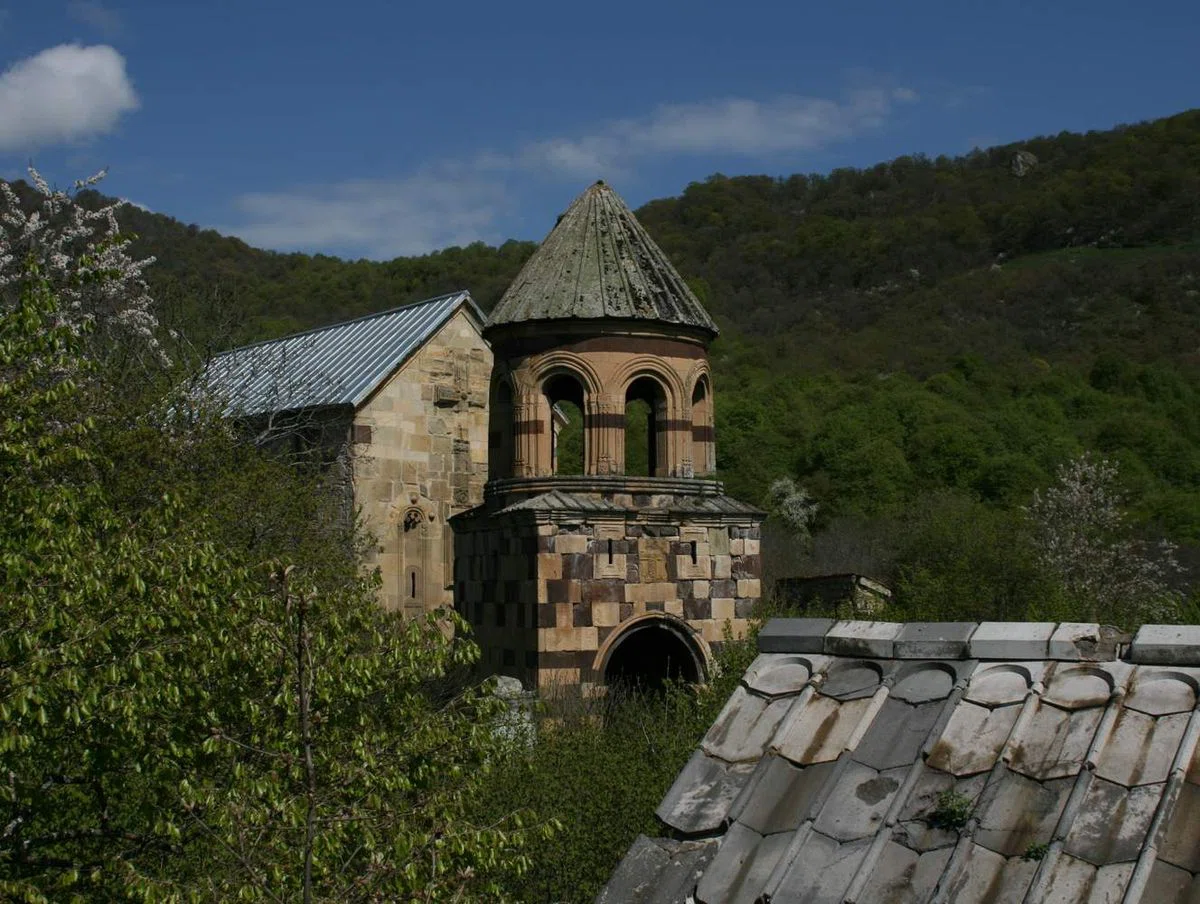
Gudarekha Monastery in Kvemo Kartli is a Georgian landmark with unusual architectural solutions.
Going on an excursion to Gudareh Monastery you will see not only its building. The object is a huge monastery complex, the territory of which occupies about 5 hectares. The monastery in Gudareh has several annexes, a bell tower
One of the most important landmarks of Georgia is the Gudareghi Monastery. It is located in the eastern region of Georgia called Kvemo Kartli, in the municipality of Tetri Tskaro near the village of Gudarekhi. In the monastic complex there are several buildings:
The main temple, bell tower, chapel, cross-shaped building, ornamented building, fence, gate, palace, stables, and other buildings.
Most of the buildings were built of hewn stone. The territory of the monastery, surrounded by a border, covers an area of 4.5 hectares. This monastery complex is one of the oldest monuments of architecture. It is safe to say, Gudarekh monastery complex is one of the most beautiful places in Georgia.
One of the reasons why answering the question "What to see in Georgia?", we are talking about the Gudarekh Monastery, is its architecture, it is definitely worth attention. The main temple was built of hewn stone, and is a one-nave building. The church had two annexes: the first annex was a prayer house, it was in the east side, the second annex was in the south side of the church.
The facades of the temple were decorated with ornaments. The interior is decorated with wall paintings, only fragments of them are preserved. The upper part of the window on the east side is decorated with a big ornamented cross, and below - with ornamented squares. Fragments of the ornamented iconostasis of Gudarekha Church are kept in the Art Museum of Georgia.
In the church fence there is a two-tiered bell tower. This is the earliest bell-tower in Georgia, it appeared in 1278. The first floor of the bell tower is open and the second floor is represented by an eight-span arbor. There are eight arches open on all sides, standing on columns on columns.
The chapel is a small building for prayer. It is a small one-nave temple standing behind the fence. The church walls are of grayish-yellowish sandstone and were lined with brownish-burgundy flagstone. Remains of the interior claim that the chapel was painted on the inside and ornamented on the outside.
The Cross building gets its name from the top of the window on the east façade, which has a relief image of a cross on it. It is difficult to say what was the purpose of this building. It has two floors and is built of stones of different sizes, also the building was divided into two parts by a partition.
The building with ornaments is partly ruined and is a small rectangular area. Only the eastern and northern walls of the building are preserved. The building's walls are covered with carved stones. The east wall is lined with dark red slabs.
The entrance door with a carved frame is in the same wall. On the southern side the windows are decorated with ornaments. One of the most important constructions in the monastery is a fence, its length is 400 meters. The walls of the fence are revetted with a limestone. The arrangement of stones in masonry of the walls is peculiar.
Rows are uneven, often intersecting, the stones are different in size, as well as it is unknown whether the fence had teeth. The posts are about 8 m apart on the outside, tapering upwards from the bottom. There is a rectangular hole between the posts, and it is possible that these served as embrasures.
The holes also had another purpose, as windows to the surrounding buildings. The palace lies to the northeast of the main temple. It stands on an artificially created site. The building is in a state of decay, the northeast and southeast walls have been preserved.
It is evident from the remains of the structure that the palace consisted of one two-story hall. This hall would have had extensions to the northwest and southeast. A wine hall would have been on the first floor. The building stands on a rock, the masses of which are cut into the building. The history of the building begins in the 12th century.
The walls of the palace are mostly lined with large slabs of yellow and wine. In the southern corner of the wine cathedral was built a shell designed for the collection and pressing of fruit. The stable is one of the largest buildings attached to the fence wall. The line of construction is similar to the fence itself.
The entrance to the stable is from the north. The roof is arched. Several bakeries built into the ground and a pit were found in different parts of the room.
----------------------------------------------------------------
Photo source: wikipedia.org
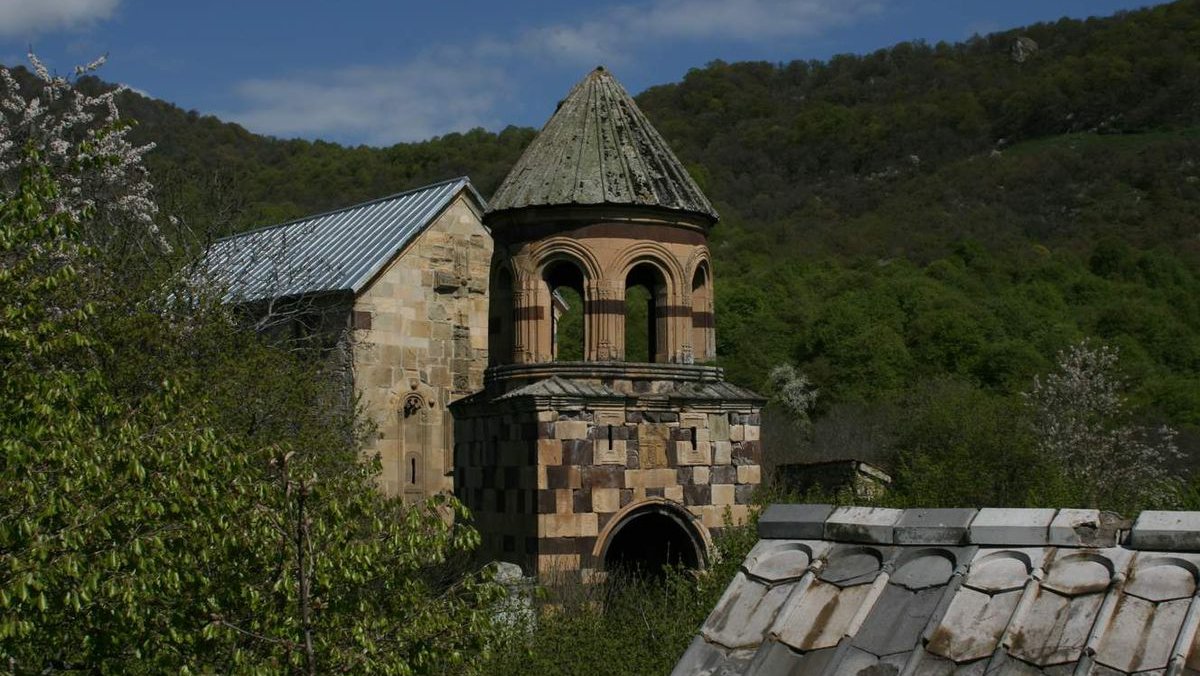
See all the sights of Georgia
-
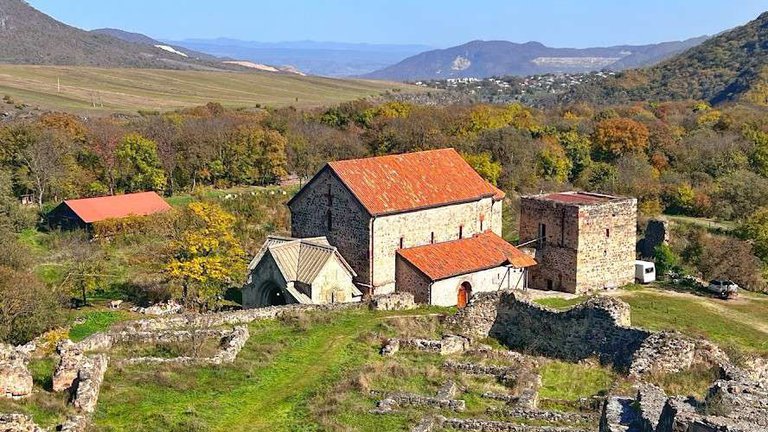
🏰 Dmanisi Sioni: An architectural wonder and an important religious center of Georgia 🌍
Sights of GeorgiaThe Dmanisi Cathedral of the Mother of God is one of the oldest churches in Georgia, buil…
-

🔮 Church of the Ascension in Ozaani: History, frescoes and architectural features of one of the most interesting sights of Georgia!
Sights of GeorgiaVisit the unique church in Ozaani! Find out how to get there, what to take with you, wher…
-

Besletsky Bridge in Abkhazia: Legends, Secrets and How to Get to This Ancient Miracle
Sights of GeorgiaHow to get to the Besletsky Bridge in Abkhazia? Where to spend the night, what to take wi…
-
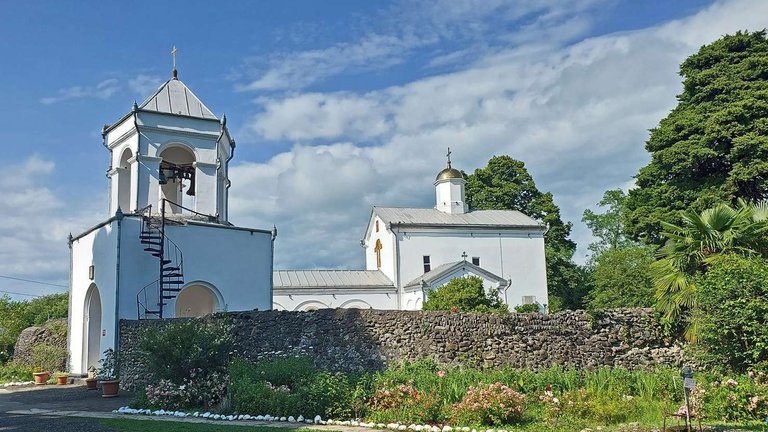
Ilori Temple in Abkhazia: Tragedy of Restoration, Disappeared Relics and Secrets Shrouded in Darkness
Sights of GeorgiaFind out everything about the Ilori Temple in Abkhazia: how to get there from different c…
-
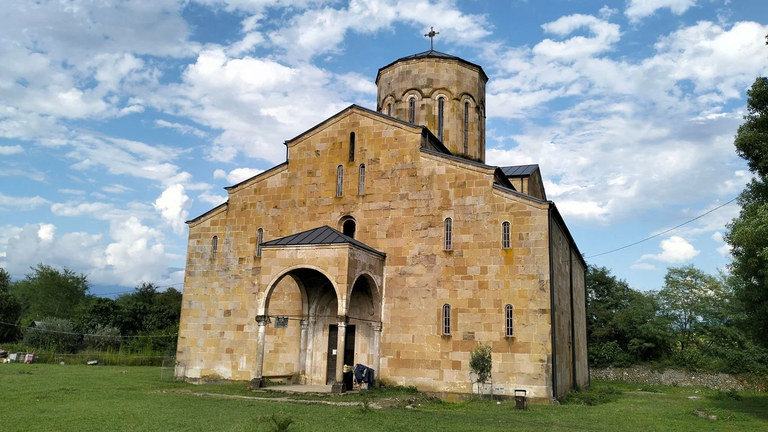
A place that defies restoration: why is the Mokva Cathedral in Abkhazia called cursed and sacred at the same time?
Sights of GeorgiaPlanning a trip to Abkhazia? Don't miss the Mokva Cathedral, one of the most ancient chur…
-
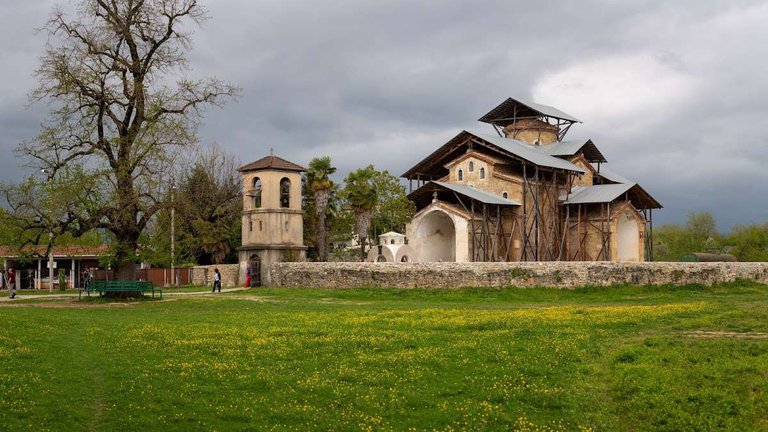
The Lykhny Church of the Dormition of the Blessed Virgin Mary is a 10th century mystery that is worth revealing!
Sights of GeorgiaFind out how to get to the temple, what to see nearby, where to eat and stay, and what sp…
-

Dranda Cathedral of the Dormition of the Blessed Virgin Mary - Find out what one of the oldest temples in Abkhazia hides
Sights of GeorgiaFind out what the Dranda Cathedral in Abkhazia hides behind it! 🌍 Discover the mysterious…
-
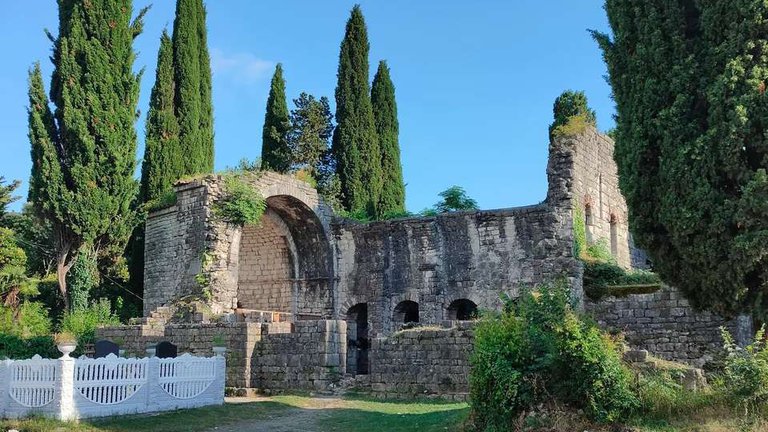
Tsandripsh Basilica: a unique Byzantine temple in Abkhazia that you must see!
Sights of GeorgiaThe Tsandrypsh Basilica is one of the most mysterious and unique sights of Abkhazia. Lear…












30 comments
Log in to leave a comment
Восхитительно, на что способна человеческая рука. Автор прав, на архитектуру Монастыря Гударехи следует обратить внимание.